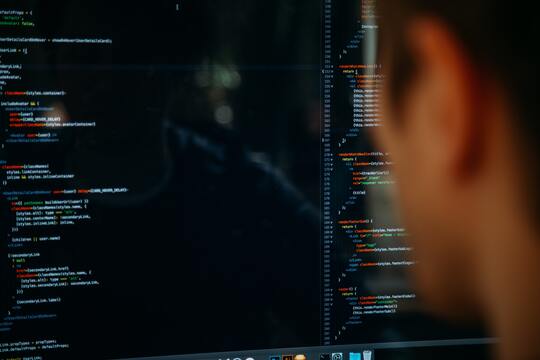Lawyers have never really had software tools to assist them in their daily work, except for the Office suite or Google with the classic text editors (Word, Gdoc), spreadsheets (Excel, Gsheet) and presentation tools (Powerpoint and Gslides).
Even though some departments within the company have already made their digital transition for many years.
Sales and marketing are for example assisted by CRM (customer relationship management) software, online appointment scheduling, automated emailing. Finance is assisted by ERP (Enterprise resource planning) and accounting software.
It must be said that lawyers, often considered as a support function within the company, sometimes take a back seat to the company's digital transition plans. This is despite the fact that the contracts they produce are the heart of the business and must be the subject of special care to avoid all kinds of setbacks: commercial, financial and legal.
Another explanation for the low level of digitalization in the legal department is that human resources are often limited, which does not allow lawyers to devote the necessary time to optimizing their activity. The latter are extremely solicited by all the company's departments and must act reactively, which sometimes prevents them from taking the necessary distance to create an optimization plan for their activity.
Today, this trend is changing thanks to new technologies developed specifically to help lawyers work more efficiently. Among these technologies, two are particularly popular: artificial intelligence and "no-code" software.
Although more and more present in the daily life of lawyers, these two technologies are sometimes confused. In this article, we propose to review the objectives fulfilled by these two technologies in the optimization of the work of lawyers, and to compare their advantages and disadvantages.
A common goal: optimizing the contractual cycle
One of the obvious benefits of the technologies available to lawyers today is to allow them to optimize all phases of the contract life cycle.

At the time of contract creation, technology allows lawyers to:
- centralize a database of contract models shared by all lawyers
- Give autonomy, if they wish, to their operational staff to create contracts from automated models
- collect contract data in dynamic forms to be able to exploit them later in a search engine for example or to create an advanced reporting of the contractual activity
After the contract is created, comes the negotiation phase, during which the parties to the contract wish to revise or comment on the contract. At this point, technology allows lawyers to :
- centralize the exchanges of the different parties to avoid dispersing the discussions in several tools (mailboxes, comments and revisions in the Word document, etc.)
- work simultaneously with several people on the contract (like on Word online or Google Docs)
- or work in a sequenced manner to enforce contract approval paths
At the end of the negotiation comes the moment of signature. Today, a large number of companies have equipped themselves with electronic signature software in order to reduce the duration of this phase to a minimum and no longer depend on postal delays or possible errors that may require starting the entire signature process from scratch.
Then, once the document has been signed, the goal of the lawyers but also of the other people handling the contracts within the company is to be able to fully exploit all the contract data. For example, schedule reminders on important dates, perform a precise search of all contracts created on a particular date range and containing a specific clause, or generate a report in a few clicks on the contractual activity of the past month.
No-code" tools for contract creation
Behind the anglicism "no-code" hides a new family of technologies whose objective is to allow the user to be totally autonomous in its use.
As opposed to the "traditional" software of a few years ago, which systematically required the help of a computer engineer to be able to make the sometimes necessary adaptations, "no-code" software offers total freedom of parameterization to its users without any particular computer skills required.
Let's take a simple example from lawyers. Today, no-code software such as Seraphin allows a lawyer to transform his static Word contract template into a dynamically fillable contract via a form. This is a small revolution that removes the lawyer's dependence on the availability and goodwill of the team in charge of support at the software publisher to which he subscribes.
Another example: "no-code" software allows lawyers to autonomously and automatically create a summary sheet of all contracts produced by the company via dynamic forms. Indeed, since the contractual data is collected at the source in dynamic forms when the contract is created, it can be directly used to feed a summary sheet, unlike a scanned pdf whose content cannot be used by a search engine. These summary sheets can be used to program reminders on important deadlines or to allow for simpler searches in the contract database based on advanced filters.
As you can see, "no-code" tools, which are particularly widespread in marketing, sales and finance teams, are now also available to legal professionals, which should increase their ability to optimize the performance of their internal processes.

Artificial intelligence: one option among others in the lawyer's arsenal
For lawyers, artificial intelligence is the technology capable of analyzing a document, for example a contract, and extracting the essential data (amounts, dates, identity of the parties, presence of certain clauses, etc.).
This technology is particularly useful for analyzing a large inventory of past contracts to extract essential data and allow a user to perform an advanced search among the contracts in his or her document base according to specific filters for the contractual subject matter.
For example, let's use the example mentioned above of searching for all contracts created on a particular date range and containing a specific clause.
The artificial intelligence will be able to analyze a contract in pdf format, including a scanned contract, in order to extract essential information such as the presence of a specific clause. The purpose of such an analysis will be to allow lawyers, in particular, to search among the mass of all their contracts, those which contain the clause in question, and that in a few seconds.
Artificial intelligence is therefore a technology that can be particularly useful in the situation where you want to analyze a stock of past contracts that is large enough for the analysis algorithm to be trained and provide convincing results.
The fewer contracts you have in your database, the more difficult it will be for the artificial intelligence to provide a relevant analysis of the data in your contracts.
However, this does not have to be the case for companies that want to take advantage of the power of an advanced search engine to navigate their contractual database. There are two other options for handling your inventory of past contracts:
- import the follow-up documents of your contracts in Excel format into a contract management software
- create summary sheets of your contracts manually in the contract management software
The first option will be useful for lawyers who have organized their contract tracking in an Excel (or Gsheet) spreadsheet. If you are tracking your deadlines, as well as the important information of your contracts in this type of tables, then you will be able to simply import all this data into a contract management software, without having to resort to the analysis of an artificial intelligence. All the data of your contracts are already classified in these Excel tables, so using artificial intelligence in this case is not useful.
The second option, to create summary sheets of your contracts manually, is obviously the most tedious, but certainly the fastest and least expensive if your stock of past contracts is small and very heterogeneous, i.e. made up of many different types of contracts. Indeed, the heterogeneity of your past contracts database will make it more difficult for an artificial intelligence to analyze it.
Artificial intelligence vs. no-code: the match
Finally, between "no-code" technologies and artificial intelligence, what should lawyers focus on to perform better in their activity?
In our opinion, the two technologies are complementary and should be used in different situations.
Artificial intelligence will be an effective ally for building summary sheets of your past contracts if you have not already created these sheets on an Excel spreadsheet for example or in a previous contract management software. One drawback is that its cost can sometimes be high depending on the nature of the stock of contracts to be analyzed (volume, heterogeneity, number of information to be extracted, etc.). On the other hand, artificial intelligence will be less efficient than no-code for the analysis of your future contracts.
Indeed, the "no-code" will allow you to create precise summary sheets of your future contracts, giving you total control over the software's configuration. You decide what information to extract from the contract independently. The "no-code" also allows you to create contracts from dynamic frames. Its role therefore goes much further than simply creating a summary sheet of your contracts.
Remember that the final objective of the creation of a summary sheet of your contracts is to allow you to program reminders on important dates but also to carry out precise searches in your contract database via an advanced search engine.
Depending on your use case, you may not need artificial intelligence or you may not need "no-code" technology.
You want to get an opinion on the technologies adapted to your company? Our team will advise you free of charge.



